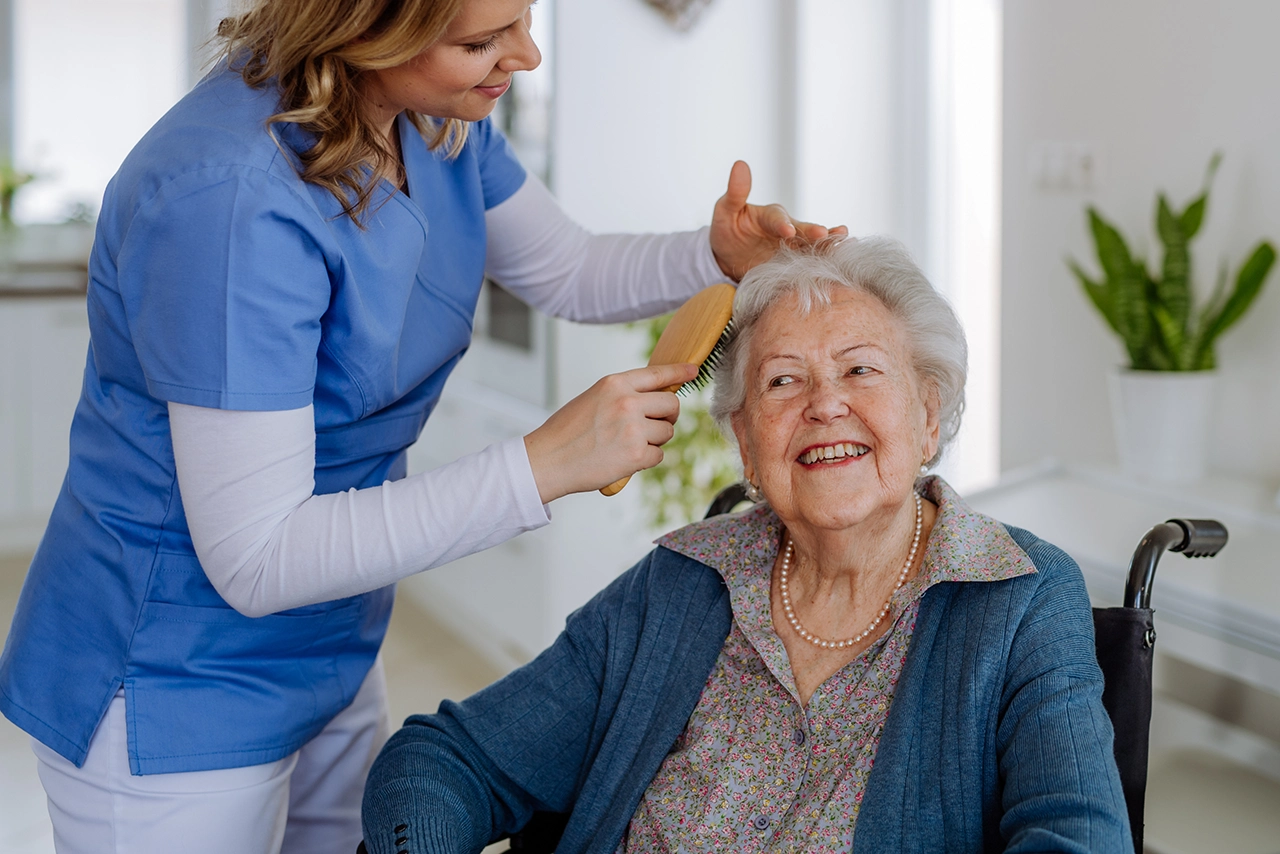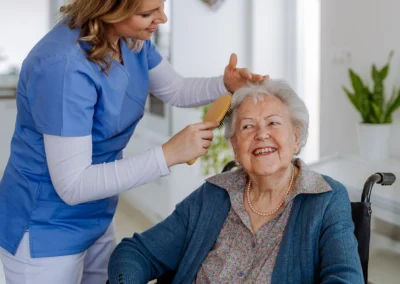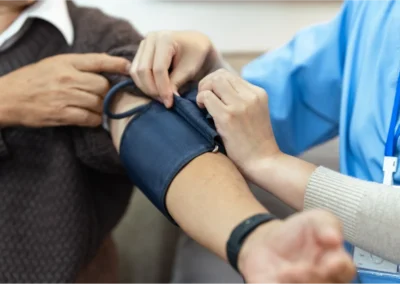As individuals age, the simple yet essential tasks of dressing and maintaining personal appearance can become more challenging. For the elderly, these activities are not just about aesthetics but play a vital role in maintaining a sense of dignity, independence, and overall well-being. Support with dressing and personal grooming becomes a significant aspect of caregiving, offering not only practical assistance but also emotional support to enhance the quality of life for older individuals.
Understanding the Significance of Dressing and Personal Appearance for the Elderly
Preserving Dignity:
Dressing is a personal and private activity that contributes to an individual’s sense of dignity. For the elderly, who may face physical limitations or health challenges, maintaining the ability to dress with assistance preserves a level of independence and self-respect.
Boosting Confidence:
The way a person looks and feels about their appearance can have a profound impact on their self-esteem and confidence. Support with dressing ensures that older individuals can present themselves in a way that aligns with their self-perception, fostering a positive mindset.
Preventing Health Issues:
Proper dressing involves choosing suitable clothing and ensuring that garments are worn correctly. Assistance in dressing helps prevent health issues such as skin irritation, pressure sores, or complications arising from wearing inappropriate attire.
Encouraging Engagement:
Maintaining personal appearance is not just a functional necessity but also a form of self-expression. By providing support in dressing, caregivers encourage older individuals to remain engaged in personal grooming routines, promoting a sense of normalcy and routine.
Challenges Faced by the Elderly in Dressing Independently
Reduced Mobility:
Conditions such as arthritis, joint pain, or muscle weakness can limit an individual’s ability to move freely. These mobility issues may make reaching, bending, or putting on certain types of clothing challenging without assistance.
Cognitive Impairments:
For those with cognitive impairments, dressing can become a complex task. Individuals may struggle with sequencing, forget the purpose of certain clothing items, or have difficulty coordinating movements. Support with dressing is tailored to address these challenges with patience and understanding.
Balance and Stability Issues:
Maintaining balance while dressing can be precarious for the elderly, especially if they have balance or stability issues. Support with dressing involves ensuring a safe environment and assisting with movements to prevent falls.
Complex Clothing:
Certain types of clothing, such as those with small buttons, zippers, or intricate fastenings, may pose challenges for older individuals. Support with dressing includes selecting clothing that is easy to put on and remove.
How Caregivers Provide Support with Dressing and Personal Appearance
Assessing Individual Abilities:
Caregivers conduct thorough assessments to understand an individual’s physical and cognitive abilities. This includes identifying any challenges they may face in dressing independently and tailoring the support accordingly.
Creating Adaptive Strategies:
Caregivers develop adaptive strategies to simplify the dressing process. This may involve using clothing with adaptive features like Velcro closures, elastic waistbands, or front-opening designs to make dressing more manageable.
Encouraging Independence:
While support is provided, caregivers also encourage as much independence as possible. This may involve allowing the individual to make choices about clothing and participate in the dressing process to the extent of their abilities.
Providing Gentle Physical Assistance:
Physical assistance may be required for tasks such as putting on socks, fastening buttons, or zipping up garments. Caregivers provide this assistance with a focus on preserving the individual’s comfort and dignity.
Maintaining Personal Preferences:
Understanding personal preferences is crucial. Caregivers take into account an individual’s style, color preferences, and clothing choices, ensuring that the person feels comfortable and maintains a sense of identity.
Ensuring Safety:
Safety is a top priority when supporting dressing. Caregivers create a safe environment, considering factors like proper lighting, non-slip surfaces, and appropriate furniture to prevent accidents.
Hygiene and Grooming Assistance:
Beyond dressing, caregivers assist with personal grooming tasks, including hair care, shaving, and skincare. This holistic approach ensures that the individual’s overall personal appearance is well-maintained.
Customizing Support to Individual Needs
Establishing Routine:
Creating a consistent routine for dressing helps provide predictability and comfort. Caregivers work with individuals to establish a dressing routine that aligns with their preferences, contributing to a sense of normalcy.
Respecting Personal Choices:
Respecting personal choices is fundamental in providing support with dressing. Caregivers honor an individual’s choices in clothing styles and accessories, recognizing that personal expression plays a vital role in well-being.
Effective Communication:
Effective communication is key to successful support with dressing. Caregivers maintain open communication, ensuring that the individual feels heard, understood, and involved in decisions related to their personal appearance.
Summary
Support with dressing and maintaining personal appearance is a multifaceted aspect of caregiving that goes beyond the functional aspects of putting on clothing. It encompasses preserving dignity, boosting confidence, and preventing health issues, contributing to the overall well-being of older individuals. Caregivers play a crucial role in customizing support to individual needs, addressing challenges, and fostering an environment that promotes independence and self-expression. Through this holistic approach to personal care, caregivers empower the elderly to navigate the daily task of dressing with grace, dignity, and a sense of personal agency. In doing so, they contribute to enhancing the quality of life for those they serve, recognizing the importance of every individual’s unique identity and personal choices.








